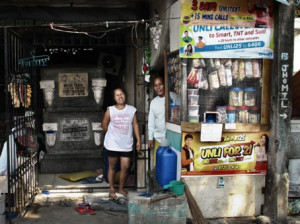Kate Holdal – Manila’s Quest To Build A Better Informal Settlement
 Nextcity.org – May, 27, 2013 – This special issue of Forefront is part of The Rockefeller Foundation’s Informal City Dialogues, a year-long collaboration with Next City and Forum for the Future taking place in six rapidly urbanizing cities around the world. The project aims to foster a conversation about creating more inclusive and resilient cities. Read weekly dispatches from our cities, watch short films and engage with others at nextcity.org/informalcity .
Nextcity.org – May, 27, 2013 – This special issue of Forefront is part of The Rockefeller Foundation’s Informal City Dialogues, a year-long collaboration with Next City and Forum for the Future taking place in six rapidly urbanizing cities around the world. The project aims to foster a conversation about creating more inclusive and resilient cities. Read weekly dispatches from our cities, watch short films and engage with others at nextcity.org/informalcity .
From the second story of his lemon-yellow home in north Manila, Alberto Legarda Evangelista, 71, surveys the leafy neighborhood he has lived in for the past decade. Below the open-air veranda where he sleeps through the humid nights, a young mother is singing a quiet lullaby to her twins. Nearby, the shouts of teenage boys playing a game of basketball float over the chuckles of their parents, who are whiling away the midday heat with playing cards and sodas.
All of this would be a postcard of suburban idyll were it not for the fact that Evangelista lives in Manila’s largest public cemetery, Cementerio del Norte, along with some 1,000 other families. Century-old tombs have been converted into stalls selling sachets of shampoo and instant noodles, flowered pathways into public washing stations, grassy knolls into doghouses. Car batteries power radios, karaoke machines and television sets; clotheslines are strung between crosses. The “home” Evangelista lives in is actually a mausoleum housing eight graves. He considers himself lucky — the breezy second story where the deceased’s family pays their annual respects doubles as his bedroom. “Look at my view,” he says, pointing his cigarette out towards the field of tombstones. He tells me this the strongest, safest home he’s ever had.
Read more: http://nextcity.org/slum-lab-manilas-quest-to-build-a-better-informal-settlement